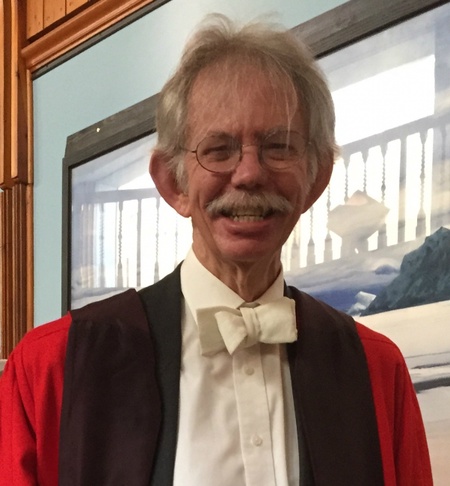This blog report was inspired by a BBC News item on 12 February 2019 by Simon Armstrong entitled "Bluebird: What next for Donald Campbell's record-breaker?"
On 4 January 1967, Sir Donald Campbell died when his jet powered craft "Bluebird" somersaulted and sank to the depths of Coniston Water during an attempt upon the world water speed record.
The shattered remains of Bluebird were raised in 2001 by a dive team led by an engineer, Bill Smith and the photographs accompanying the BBC report show catastrophic damage. This wreckage was subsequently removed to Smith's workshop in North Shields where years later and after an engineering programme par excellence, Smith and his team succeeded in bringing Bluebird back to her former glory, so much so that last year, on a private loch in Bute, she was duly prepared, fired-up and run at an astonishing 150 mph.
As the BBC report discloses, the law of unintended consequences appears to have a bearing upon subsequent events and relationships especially between Smith and Ruskin Museum in Coniston, where there is a specially built wing intended as the final resting place of Bluebird and where her original jet engine and other artefacts reside. Despite significant logistical problems, Smith wants Bluebird to emerge from time to time and do what she does best. The museum opposes the very idea, although the idea is in fact now supported by Campbell's daughter, Gina. This is all very romantic but it becomes clear that there are important legal issues to consider. One such issue is ownership. A reading of the report indicates that Smith, perhaps unwittingly, is resting an ownership case on accessio (that is to say, joining corporeal things together, with the old title of any less significant, accessory items being subsumed into the title of the main, principal item), or could it be specificatio (manufacturing an entirely new thing)? These are Roman law concepts that continue to be found in Scots law and other legal systems, as forms of "original acquisition" (i.e. creating a new ownership title for an object). Let us consider this in the present case.
There can be little or no doubt that the team has refashioned crumpled metal bodywork especially behind the cockpit. Photographs show this area did "survive" impact. Parts damaged beyond repair or simply missing were replaced. Smith says he and his team bought all kinds of bits and pieces and made new components. They created sponsons, the nose, the hydraulics, the electronics, the cockpit and canopy and sourced a new jet engine (the original powerplant being in the museum). Smith points out the wreckage was only half a boat. He considers he now has a right of ownership because it is "all our creation, all our private tangible property... We own it because we bloody well created it."
Of course there is a counter ownership argument advanced by Ruskin Museum. Simply put, it seems Bluebird was owned by the Campbell Family Heritage Trust and in 2006, the Trust transferred ownership to the museum which then built a wing for the specific purpose of housing Bluebird and her engine as a permanent attraction. The transfer was conditional upon Bluebird being rebuilt to original and full operating condition and Smith was nominated as engineer. The conditions, clearly, have been observed by the museum BUT in so doing, has the museum inadvertently lost ownership in whole or part, as Smith claims?
Quite some years ago, the late and much-missed Professor David Carey Miller devised a rather tortuous tutorial problem for his Property Law course. It was based upon the South African case of Khan v Minister of Law and Order 1991 (3) SA 439 concerning a "cut 'n' shut" BMW motor car where the front half of one car was mated to the rear half of a similar but stolen car. Incidentally, this is not a completely historic problem: on 11 March 2019 the BBC’s Crimewatch Roadshow Live included coverage of so-called "chop shops", that is to say “garages where stolen cars are dismantled and fitted with new parts before being re-sold to unsuspecting owners.”
In the case of Khan, accession (the English rendering of the Latin term accessio) operated on the basis of bulk and ownership of the composite item went with the bulkier rear portion. How would this play out in Scotland? In Professor Carey Miller’s tutorial, each tutorial group was divided with the one half being instructed to argue an ownership case based upon accessio and the other asked to argue specificatio, this turning on whether the successor object was in fact a new thing with a new character, or instead retained the character of the main item that other things were attached to. If it was the latter, this principal item would dictate what sort of corporeal item it was, and ownership of the (improved) item would sit with person who owned the principal in the first place. This tutorial ran for years and there was never a clear-cut answer. Some groups displayed admirable advocacy in arguing a case in which they later admitted having little faith. Even the good Professor could be swayed at his annual meeting with tutors and one year, in his absence, Professor Cornelius van der Merwe was reluctant to commit absolutely. Thus, we could never decide if a moveable had been joined to another moveable as in Khan or if the product was a new type of thing such as where a vehicle is built out of raw materials as in Wylie and Lochhead v Mitchell (1870) 8 M 552. From Bluebird's perspective, could it be either? Some have even argued for commixtio, this being the legal process for allocating ownership where indistinguishable solids are mixed together to create common property. (Classic examples of commixtion might be the intermingling of two batches of grain or two unmarked flocks of sheep, so this seems less compelling in Bluebird’s case.)
The BBC report suggests that lawyers might yet be involved. Readers will have spotted that Coniston is in England and so not our problem, although similar principles are present there and their solution, therefore, of interest to us. But not so fast! There is yet the possibility, remote though it may be, of a very similar Scottish case arising and if it does, we need to be prepared with an answer. In 1952, John Cobb died in an attempt on the same speed record. His craft, Crusader, went out of control at 200mph and rests in over 600 feet of water at the bottom of Loch Ness where there is a roadside memorial. Her position is known and were Crusader ever to be raised and cause dispute, Professor Carey Miller's problem will most certainly be of relevance and Aberdeen taught lawyers will have the upper hand!




I'm staggered that before spending a penny on any restoration work, it would seem that Smith didn't do any ownership, and acceptability of future intentions, research.
Any and all discussions re such an arrangement just can't carry the weight of an agreed, understood, legally written contract between all parties with ownership interest, or claims for such, clearly set out - particularly in this case because of all the unresolved ownership aspects.